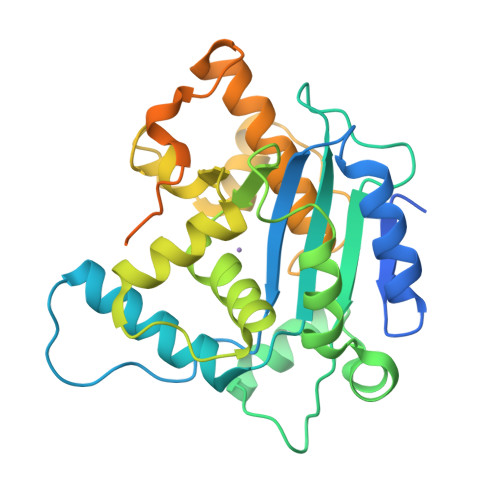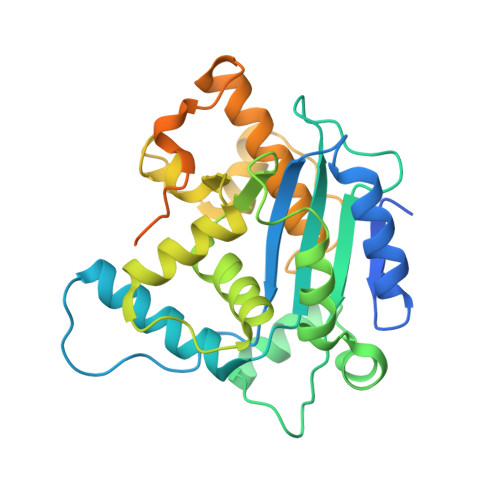The activity and selectivity of fission yeast Pop2p are affected by a high affinity for Zn2+ and Mn2+ in the active site
Andersen, K.R., Jonstrup, A.T., Van, L.B., Brodersen, D.E.(2009) RNA 15: 850-861
- PubMed: 19307292
- DOI: https://doi.org/10.1261/rna.1489409
- Primary Citation of Related Structures:
3G0Z, 3G10 - PubMed Abstract:
In eukaryotic organisms, initiation of mRNA turnover is controlled by progressive shortening of the poly-A tail, a process involving the mega-Dalton Ccr4-Not complex and its two associated 3'-5' exonucleases, Ccr4p and Pop2p (Caf1p). RNA degradation by the 3'-5' DEDDh exonuclease, Pop2p, is governed by the classical two metal ion mechanism traditionally assumed to be dependent on Mg(2+) ions bound in the active site. Here, we show biochemically and structurally that fission yeast (Schizosaccharomyces pombe) Pop2p prefers Mn(2+) and Zn(2+) over Mg(2+) at the concentrations of the ions found inside cells and that the identity of the ions in the active site affects the activity of the enzyme. Ion replacement experiments further suggest that mRNA deadenylation could be subtly regulated by local Zn(2+) levels in the cell. Finally, we use site-directed mutagenesis to propose a mechanistic model for the basis of the preference for poly-A sequences exhibited by the Pop2p-type deadenylases as well as their distributive enzymatic behavior.
Organizational Affiliation:
Centre for mRNP Biogenesis and Metabolism, Department of Molecular Biology, University of Aarhus, DK-8000 Aarhus C, Denmark.




















